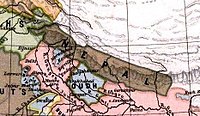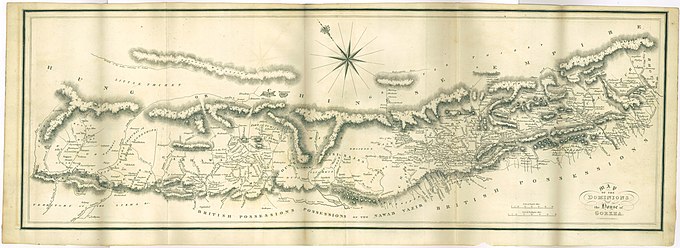
Back تاريخ نيبال Arabic Historia de Nepal AST Непал тарихы Bashkir Гісторыя Нэпалу BE-X-OLD नेपाल के इतिहास Bihari নেপালের ইতিহাস Bengali/Bangla Història del Nepal Catalan Dějiny Nepálu Czech Geschichte Nepals German Historia de Nepal Spanish
This article needs additional citations for verification. (June 2018) |
This article may require cleanup to meet Wikipedia's quality standards. The specific problem is: dubious statements and citations; copywriting help needed; probable inaccurate information. (June 2018) |
| History of Nepal |
|---|
 |
|
|
| History of South Asia |
|---|
 |

Nepal is a multi-ethnic, multiracial, multicultural, multi-religious, and multilingual country. The most spoken language is Nepali followed by several other ethnic languages.
The modern day Kingdom of Nepal was established in 1768 and started a campaign of unifying what would form the modern territories of Nepal. Some former territories had been lost due to the Sino-Nepalese War. The conflict ended with both victories and losses with the kingdom ultimately accepting tributary status with the Qing dynasty of China from 1792 to 1865.[1] The Anglo-Nepalese War ended in British victory and resulted in the ceding some Nepalese territory in the Treaty of Sugauli. In a historical vote for the election of the constituent assembly, the Nepalese parliament voted to abolish the monarchy in June 2006. Nepal became a federal republic on 28 May 2008 and was formally renamed the 'Federal Democratic Republic of Nepal' ending the 200-year-old reign of the Shah monarchs.
- ^ "Nepal," pp. 609-610., p. 609, at Google Books